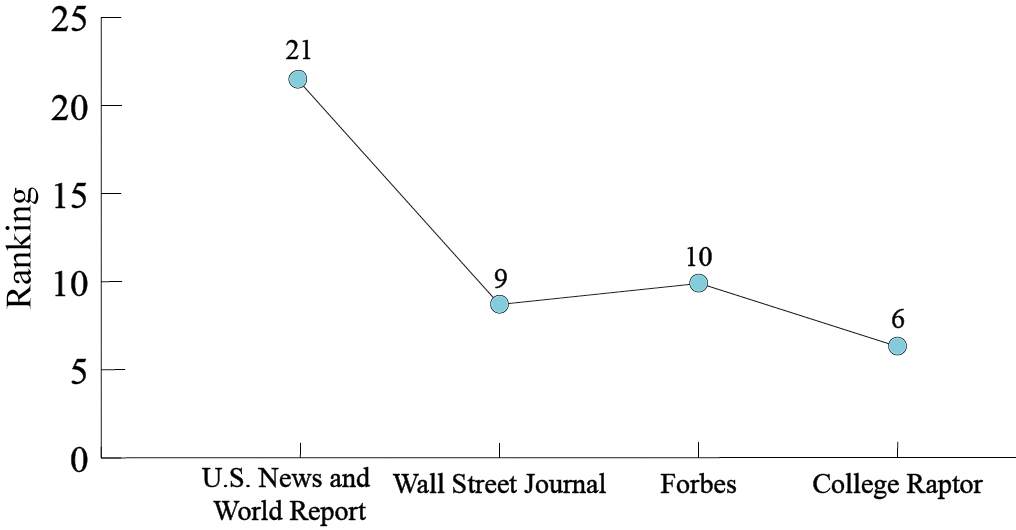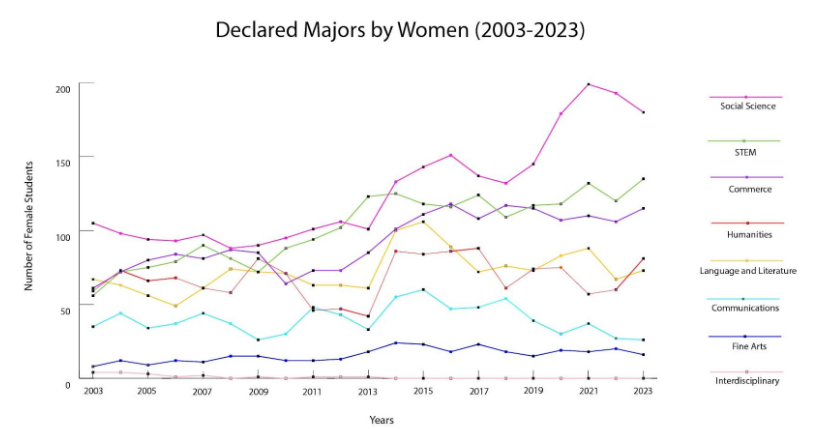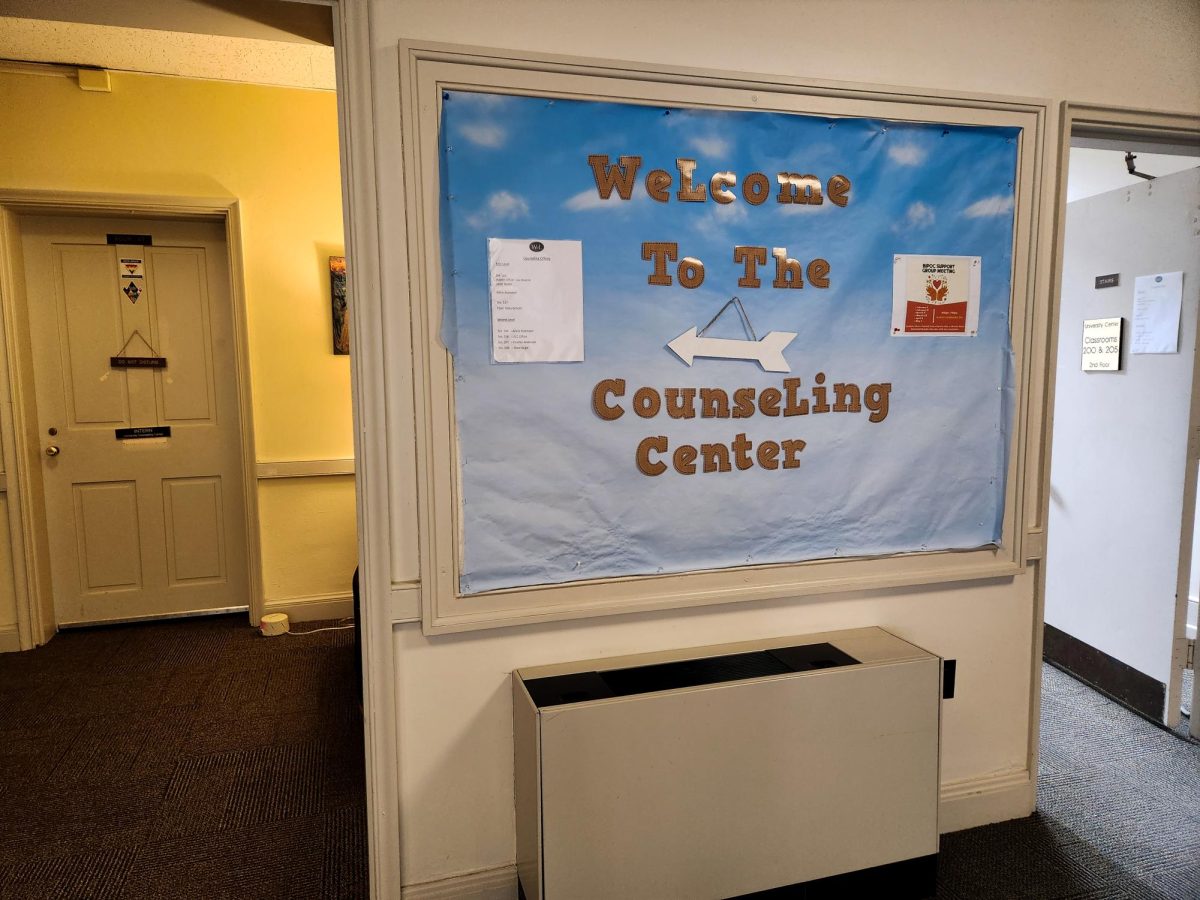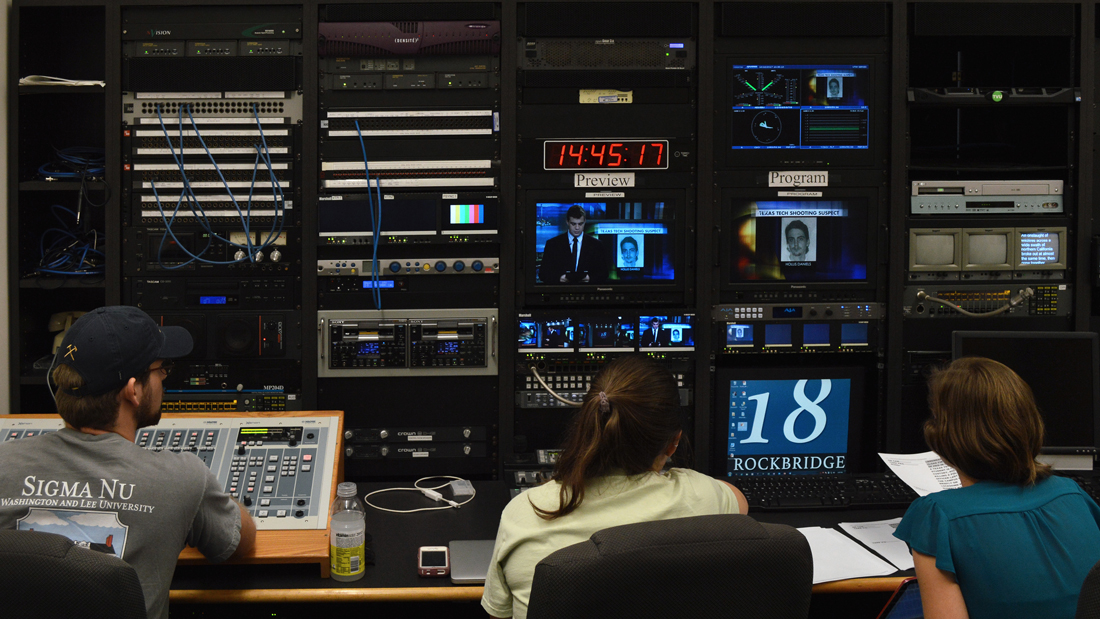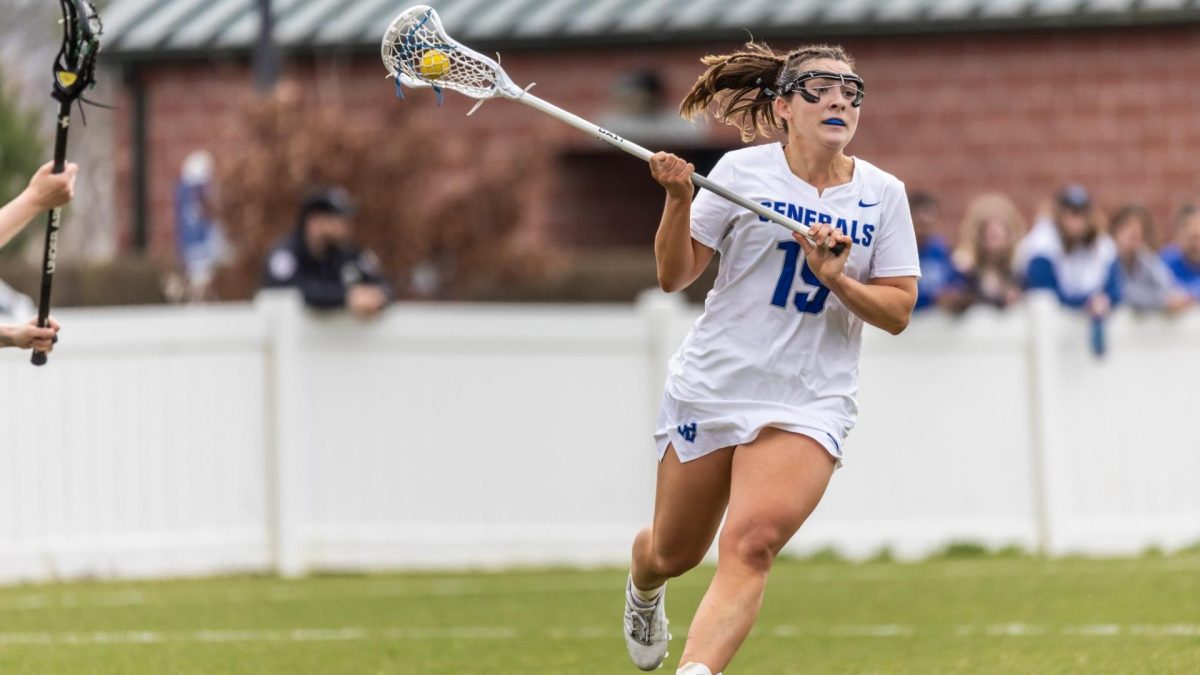Washington and Lee University is rated significantly lower in college rankings that factor in social mobility and diversity.
Eyes are on where the university stands in national rankings as Early Decision II applicants receive their admissions decisions. Admissions staff will notify Regular Decision applicants on April 1.
In U.S. News and World Report’s rankings on liberal arts colleges, Washington and Lee dropped from No. 11 to No. 21. In an October interview, the university’s Assistant Provost of Accreditation and Institutional Research, Bryan Price, said this drop in rankings is solely due to the increase in their social mobility factor.
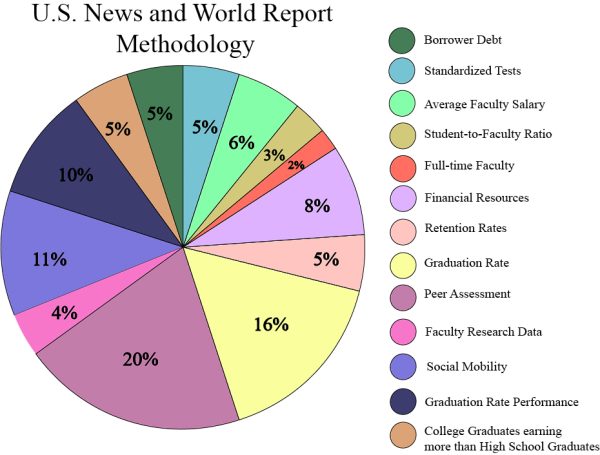
The social mobility factor makes up 11 percent of U.S. News’ methodology and comprises first-generation graduation rates and performance, as well as Pell graduation rates and performance.
The university received nearly zero points for this factor, Price said.
To be considered Pell-eligible, a student must show exceptional financial need, with most of the awards given to students coming from households earning less than $30,000 per year, according to Prep Scholar.
Similarly, the Wall Street Journal (WSJ) includes a diversity factor, which makes up 10 percent of its ranking. This category is made up of ethnic diversity, inclusion of students with lower family earnings, inclusion of students with disabilities and international diversity.
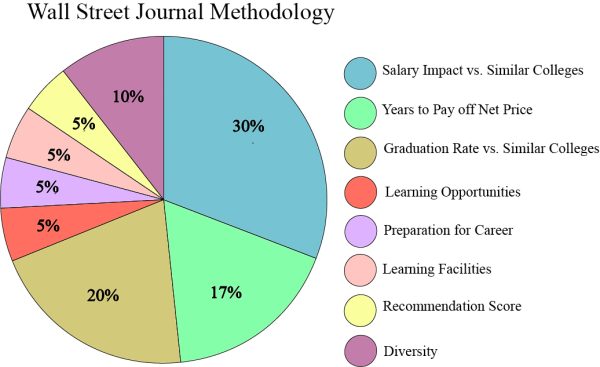
WSJ gave the university a diversity score of 33 out of 100, which is almost 40 points lower than any other categorical score the university received from WSJ. According to the journal, this factor brought Washington and Lee’s overall score down by almost four points.
According to a September statement from the University President William Dudley, WSJ ranked the school as No. 9 among liberal arts colleges.
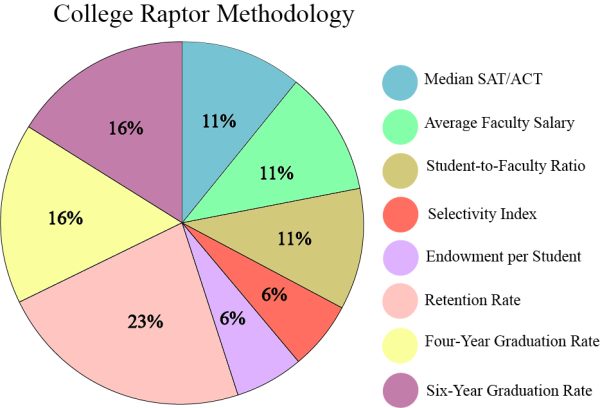
College Raptor does not include diversity or social mobility in its methodology and ranked the university No. 6 among liberal arts colleges.
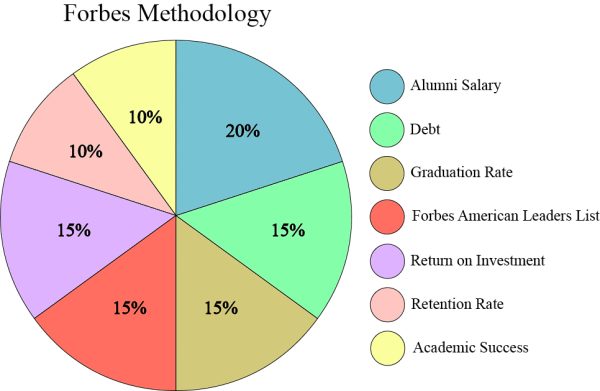
Forbes also does not have a social mobility factor, but 5 percent of the graduation rate indicator is based on the graduation rates of Pell Grant recipients.
Washington and Lee’s first-year retention rate also greatly impacts its academic rankings. College Raptor uses retention rate as its largest indicator, worth 23 percent, whereas U.S. News only counts it as 5 percent.
The university’s retention rate considered for this year’s ranking was 98 percent, according to the Washington and Lee 2022-2023 Fact Book.
Another factor in which W&L thrives is the graduation rate, Price said.
College Raptor includes both 4-year and 6-year graduation rates as a total of 32 percent. Only 16 percent of U.S. News’ methodology incorporates 6-year graduation rates.
The university’s 4-year graduation rate was 90 percent and the 6-year rate was 95 percent, according to the Washington and Lee 2022-2023 Fact Book.
U.S. News’ lack of emphasis on factors such as retention rate, graduation rate and student-to-faculty ratio partially causes the disconnect between these rankings, Price said.
“There is literature that shows a strong correlation between small class engagement and the success of students,” Price said.
Eleven percent of College Raptor’s methodology is made up of the student-to-faculty ratio, and U.S. News only counts it as 3 percent.
Another important aspect of these rankings is success, which is defined differently by each source. Forbes uses their American Leaders List, which is meant to measure the leadership and entrepreneurial success of the university’s graduates.
On the other hand, U.S. News uses peer assessment. The assessment is U.S. News’ largest indicator, making up 20 percent of the ranking.
The assessment asks university presidents to rank the quality of up to 200 other schools on a 5-point scale, Price said. In 2007, Washington and Lee signed an agreement with multiple other schools committing to not marketing ranking placement and boycotting the peer assessment.
Only 28.6 percent of 600 schools participated in this peer assessment in the past year, Price said.
Although the university’s rankings vary, the Vice President of Admissions, Sally Richmond, said in an October interview that she does not believe rankings change the quality or number of prospective students that tour or apply to the university.
Brad Singer and Tyler Waldman, two members of the University Ambassadors Executive Team, state they have never received a question regarding rankings.
“I definitely paid attention to W&L’s rankings when applying here, but I haven’t looked at them since,” said Meaghan Endres, the Executive Committee’s sophomore representative.
Although prospective students look at rankings, Richmond said the university does not make decisions to cater to receiving a higher ranking.



